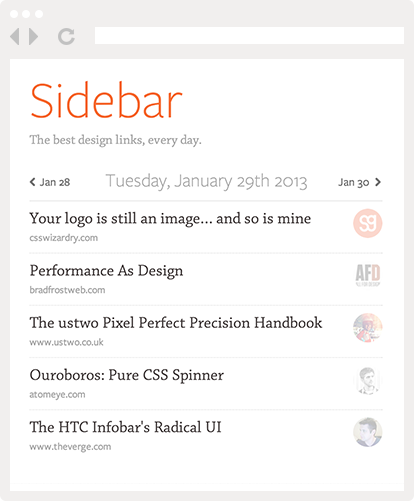Today I finally launched Telescope, a real-time, open-source social news app that I’ve been working on for the past couple months.
“Social news app” is a fancy word for sites like Hacker News, Reddit, as well as Digg and Slashdot before them. At their core, they’re all sites that let you rank stuff.
Ranking Stuff: A Powerful Concept
But when you dig deeper, that “ranking stuff” business goes on in a lot more sites that just social news sites. It’s also the principle behind Dribbble, CodePen, and any other site that lets users submit and vote on content.
Yet as far as I know, even though they share a lot of similar features all those sites were built from scratch, because there is no WordPress of social ranking sites.
I’m hoping Telescope can change that. It’s still young, but I’m already using it for my own project, Sidebar. The fact that Sidebar looks or works nothing like the vanilla Telescope install gives you a hint of how flexible Telescope can be.
Real-Time Made Easy
The other notable thing about Telescope is that it’s entirely real-time.
Not only do posts and comments update in real time, but so does everything else: votes, users, categories… real-time is the default!
This all happens thanks to Meteor, the Javascript framework Telescope is built on. Meteor takes care of all the real-time magic behinds the scenes, letting you spend a minimal time on the back end and focus on the UI.
Speaking of back end and front end, with Meteor both client and server share the same language, and what’s more both can share the same code! This means that if you write a method to test if a user is an admin or not, you can call it the exact same way from both sides!
Meteor: Still Young, But Promising
Meteor is very young, but has already mobilized a very active community (of which Tom Coleman, my Telescope collaborator, is one of the most active members). And the fact that you only need to know Javascript to use it is a huge plus that makes it the perfect framework for designers and front-end engineers.
In fact, I believe in Meteor so much that I’ve decided to team up with Tom to write a book using all the things we’ve learned building Telescope. Even if you’re not interested in the book, I would suggest signing up for the book’s mailing list so that you can receive weekly Meteor tips that will help you get started.
Learn & Contribute
Telescope is open source, which means two things: first, the code is available on GitHub. So you can clone it, fork it, hack it, and generally use it to learn more about Telescope. Telescope’s features are pretty standard, and you should be able to reuse a lot of its patterns for your own purposes, even if you’re building a different type of site.
Second, we’re always looking for new contributors and new ideas. So if you’d like to help us make Telescope even better, please don’t hesitate to get in touch.
A Note on Design
If you liked the Telescope landing page, I should mention that I’ll take a behind-the-scenes look at the design process in my next newsletter. On top of this, if you sign up for it you’ll also receive a free eBook on choosing colors.
I’ll also have to talk about the design of Telescope itself in a future blog post. It turns out real-time brings its own set of very interesting design constraints…
All that being said, I still haven’t touched on the reason why I started building Telescope in the first place. This will come in part two, when I tell you more about Telescope’s little sister, Sidebar.




Leave a Reply